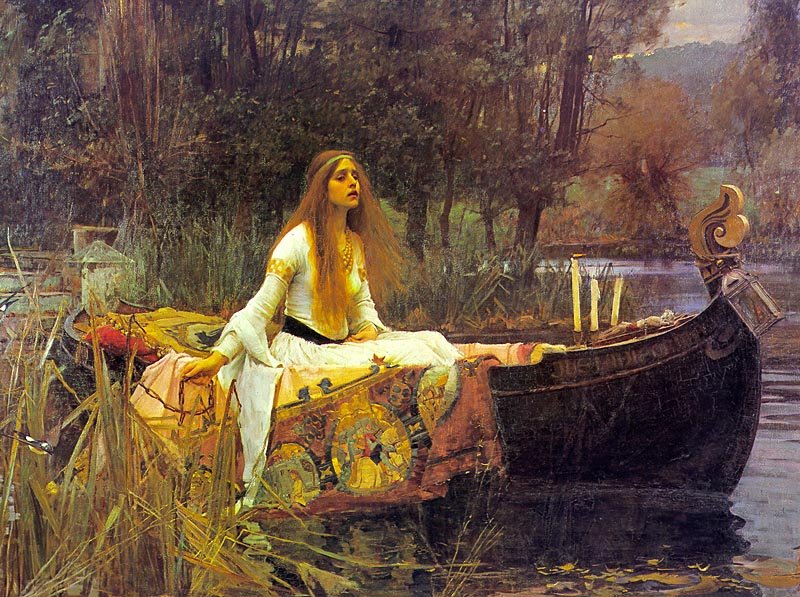As a little background to the poem, The Lady lives near Camelot (linked eternally by the single couple 'Camelot', 'Shalott' repeatedly rhyming) and has to weave what she sees from her castle window. However, she is not allowed to look directly at the world; she must use the reflection of her mirror.
Evidently, she sees Sir Lancelot and looks with her own eyes, meaning she must die.
There appear to be two versions of the poem, one adapted ten years after the original. I know not which to choose as they are both rather different (the latter ends with Lancelot's wish for grace, the former words from The Lady herself, written on her death-boat). I shall endeavour to stick to the original methinks, as this was influenced by an Italian story quite different to the English one, which he did not read until later, and so presumably contains the original essence which he wanted to convey. This includes his creation of the mirror, song, curse and weaving. How imaginative.
I might first point out that Tennyson wanted to soften the Italian 'Scalott' to 'Shalott'. This signifies how he wanted the female character to be ethereal, delicate, just as her curse was.
One of the most important lines is 'I am half sick of shadows'. This can be seen as a comment upon the poet's condition as he lives not in reality but in words which represent reality, just as the mirror represents reality to The Lady but is not quite enough. After all, the stanza started about 'delight' and quickly degenerated to this. 'Half' could refer to the fact that she has two options: to look or not to look. I.e to live or not to live, for once one has chosen to come into reality, one has chosen love or some passion, an emotional vocation. This is the struggle of the scholar: 'no time hath she to sport and play'.
I feel that Shalott, with the rhyme, must be a female version of Camelot. The harsh plosive has been softened to a fricative followed by a more close vowel, mimicking the femininity of its inhabitant contrasted to the knights inside the other building.
I found (perhaps only from a modern perspective) the early reference to 'the reaper' rather sinister, especially as it is juxtaposed with her 'angel[ic]' nature. Foreshadowing to me but perhaps not in context.
Alright, I've hardly touched the surface but feel glad I have at least paddled in some Tennyson. I might return to this post when I have more time; I certainly will return to the poem. I think it's beautifully tragic and fantastical.
I like this painting too - the expression on her face encapsulates her life to me:

No comments:
Post a Comment